Introduction
Ever wondered why some badminton games feel smooth while others feel chaotic? The secret often lies in the court itself. A badminton court isn’t just a flat surface—it’s a carefully Badminton Court with Measurements arena designed to enhance gameplay, safety, and player performance. In this article, we’ll dive deep into everything you need to know about badminton courts, their measurements, materials, setup, and maintenance.
Just like basketball court construction in India, proper planning and precise measurements are essential to create a professional and durable sports facility. Whether you’re building a badminton court for home use, a school, or a professional club, this guide will provide you with all the information you need.
What is a Badminton Court?
A badminton court is a rectangular area designated for playing badminton. It is marked with lines indicating boundaries for singles and doubles matches. Courts can be indoor or outdoor, and the surface type greatly influences gameplay speed and injury prevention.
Types of Badminton Courts
- Indoor Courts: Usually made of wooden or synthetic flooring, designed to provide consistent bounce and minimize injuries.
- Outdoor Courts: Often made with concrete or synthetic mats. Weather conditions can affect play.
Much like basketball court construction in India, indoor courts are preferred for professional play because they reduce weather-related issues and provide consistent conditions.
Standard Measurements of a Badminton Court
Getting the measurements right is crucial. Incorrect dimensions can affect game fairness and player safety.
Overall Court Dimensions:
- Length: 13.4 meters (44 feet)
- Width: 6.1 meters (20 feet) for doubles, 5.18 meters (17 feet) for singles
Court Lines:
- Side lines, back lines, and service lines must be clearly marked
- Lines are usually 40mm wide for clarity
Net Height:
- Standard net height at the center: 1.524 meters (5 feet)
- Height at posts: 1.55 meters (5 feet 1 inch)
Just as in basketball court construction in India, attention to detail in measurements ensures proper gameplay.
Court Layout and Zones
Understanding the zones helps both players and builders.
Singles vs Doubles Court Dimensions:
- Singles court is narrower; doubles court is wider
- Back boundary remains the same for both
Service Courts:
- Each half is divided into left and right service courts
- Proper markings are essential for rule enforcement
Backcourt, Midcourt, and Forecourt:
- Forecourt: near the net, ideal for smashes and drops
- Midcourt: middle area, used for drives and clears
- Backcourt: far end, used for clears and defense
Indoor vs Outdoor Badminton Courts
While the dimensions remain the same, surfaces differ:
- Indoor Courts: Smooth wooden or synthetic surfaces
- Outdoor Courts: Concrete, asphalt, or synthetic mats
- Impact: Indoor courts reduce injuries; outdoor courts need weather protection
Materials Used in Badminton Courts
Choosing the right surface affects player performance:
- Wooden Flooring: Offers excellent grip, shock absorption, and bounce
- Synthetic Mats: Durable, cost-effective, suitable for both indoor and outdoor
- Concrete/Cement: Cheapest option but hard on joints
Step-by-Step Guide to Setting Up a Badminton Court
- Measuring the Space: Ensure at least 2 meters of clearance around the court
- Marking Lines Accurately: Use chalk or tape for temporary setups
- Installing the Net: Secure posts and adjust net to 1.524 meters at center
Tools Required for Court Setup
- Measuring Tape & Chalk: For precise line marking
- Net System & Posts: Adjustable for proper tension
- Flooring Materials: Wooden planks or synthetic mats
Common Mistakes to Avoid in Court Construction
- Incorrect Measurements: Can lead to unfair gameplay
- Uneven Flooring: Causes tripping hazards
- Poor Net Installation: Affects gameplay accuracy
Maintenance of a Badminton Court
Keeping your court in top shape ensures longevity and safety:
- Regular Cleaning: Dust-free surfaces prevent slips
- Line Repainting: Faded lines can confuse players
- Floor Polishing & Care: Wooden floors need waxing; synthetic floors need gentle cleaning
Safety Measures for Players
- Non-slip Surfaces: Prevent accidental falls
- Adequate Lighting: Avoid shadows that interfere with shuttle visibility
- Court Spacing: Ensure space around the court for movement
Cost Estimation for Building a Badminton Court
- Material Costs: Wooden: ₹2,500–₹4,500/sq.m, Synthetic: ₹1,500–₹3,000/sq.m
- Labor Costs: ₹50,000–₹1,50,000 depending on complexity
- Indoor vs Outdoor Comparison: Indoor costs more due to flooring and structure
- Comparison with Basketball Courts: Similar principles apply in basketball court construction in India, though basketball courts require additional considerations like hoop installation and larger space.
Choosing the Right Location for Your Court
- Indoor Hall Considerations: Ceiling height of at least 7 meters
- Outdoor Environment Factors: Shelter from wind and rain, flat terrain
Professional vs DIY Court Construction
- Professional Installation: High-quality finish, durable, more expensive
- DIY Setup: Cost-effective, flexible, but requires careful planning
Conclusion
A well-constructed badminton court enhances the experience for players, ensures safety, and adds value to your sports facility. Following standard measurements, using the right materials, and maintaining the court properly ensures long-term usability. Just like basketball court construction in India, attention to detail, proper planning, and high-quality materials are key to building a court that lasts for years.
FAQs
1. How long is a standard basketball court construction in India?
A standard badminton court is 13.4 meters long and 6.1 meters wide for doubles; singles width is 5.18 meters.
2. What is the net height for badminton?
The net height is 1.524 meters at the center and 1.55 meters at the posts.
3. Can a badminton court be built outdoors?
Yes, using synthetic mats or concrete; weather protection is recommended.
4. What is the best flooring for a badminton court?
Synthetic mats are suitable for both indoor and outdoor.
5. How much space is needed around the court?
2 meters of clearance around the court is recommended for safe movement.
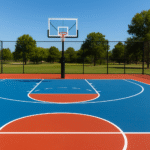
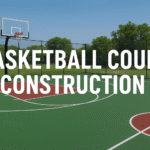
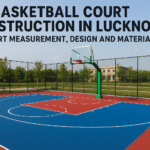

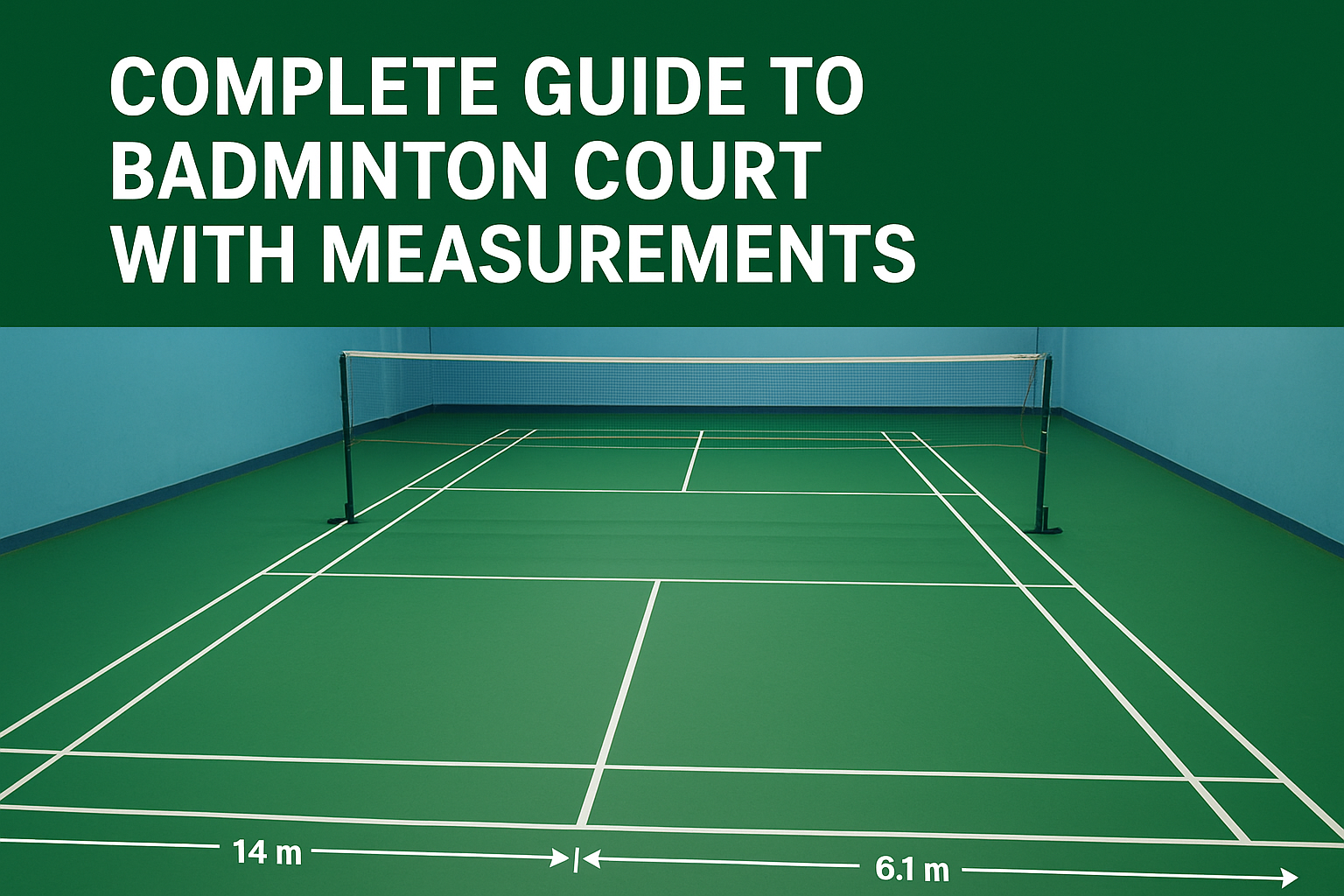
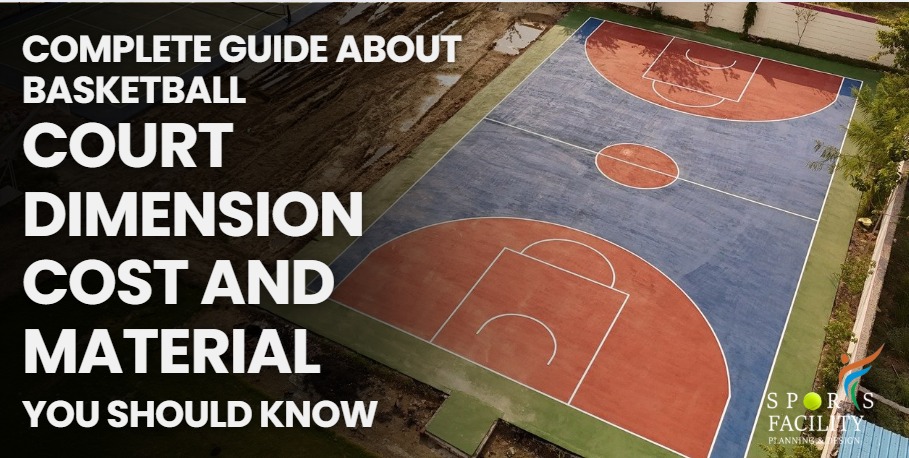
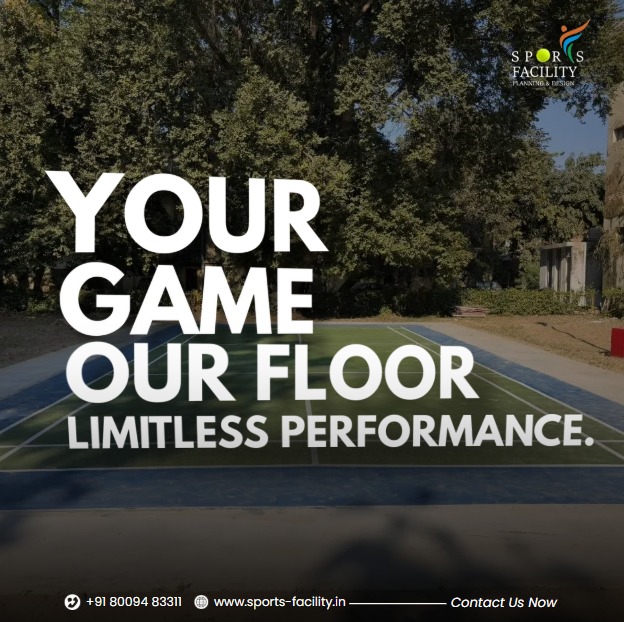
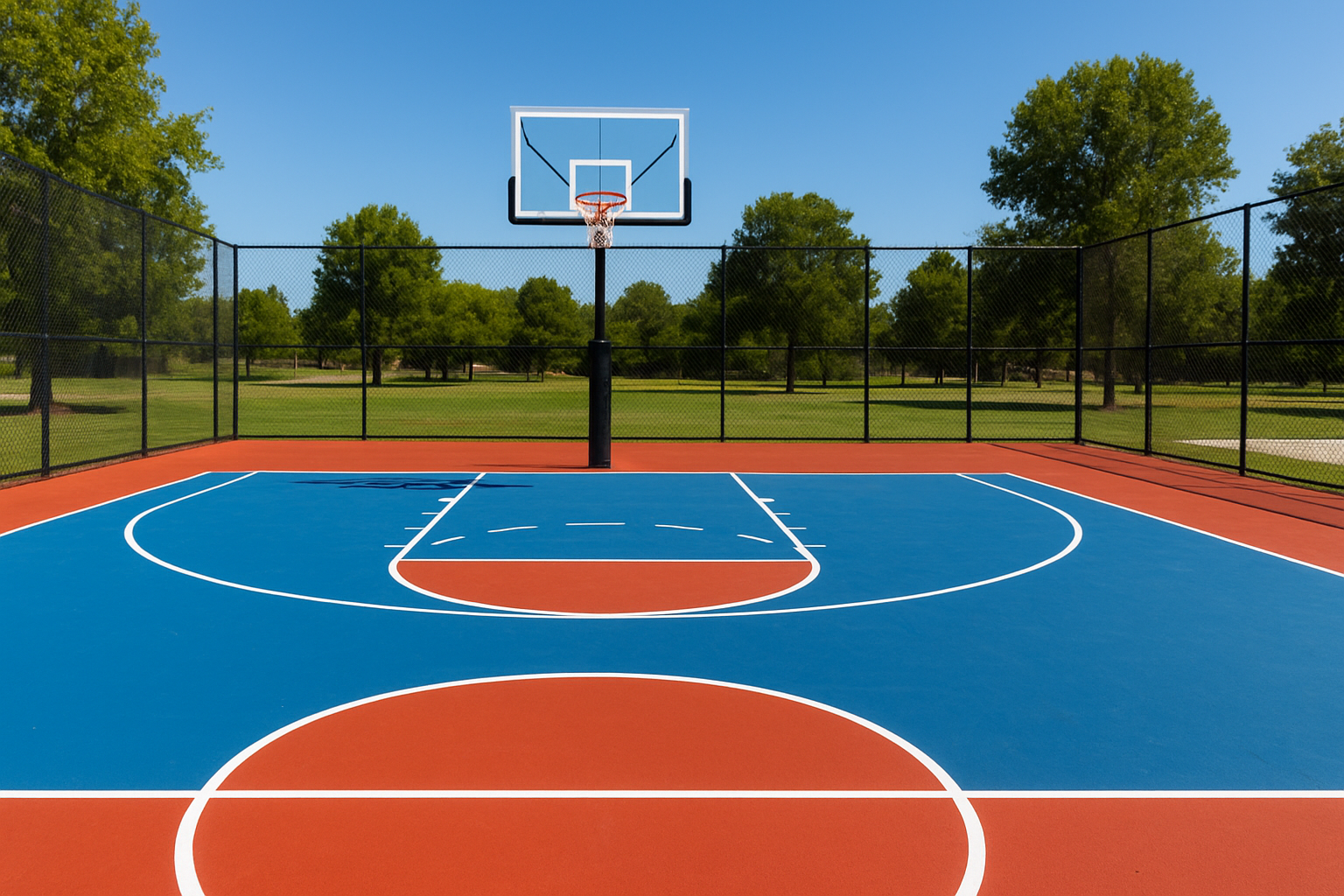
best badminton court construction service in up